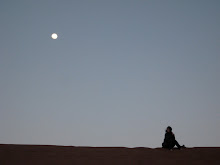
Twentieth-century artists such Chris Burden, Yvonne Rainer, Robert Morris, Robert Smithson, and Joseph Beuys have used lecture-performance to blur the lines separating art from discourse about art. In contemporary performance, artists are continuing, in this tradition, to push past the boundaries of disciplines (Desanges, for example, is foremost an art critic and curator) as well as the boundaries between art and life. These are popular themes in contemporary art practice in general, but more specific to lecture-performance is the idea of teaching-as-art. The best lecture-performances always seem to originate from artists who believe that teaching itself is a central component of their artwork. Institutional critique also factors heavily in most iterations of the form. Though it is by no means the only conceptual framework for contemporary lecture-performance, I’ve found that the most interesting work of this kind comes from artists who meld a critique of institutional structures with a specific and idealistic view: the belief that consciousness stemming from teaching and learning can lead to a new way to live in society.
The BHQF uses the form to illuminate problems in the commercialized structure of the art world and art education. The choreographer Jérôme Bel explains the philosophical foundations of his works, which are often about exposing systematic structures in the dance industry, more directly than he has found possible through movements of the body alone. Explanation, in his dances, is seen as the path toward
the emancipation of performers and spectators, an idea borrowed from the writings of Michel Foucault. Other artists mine American history and traditional forms outside of art education. The National Theater of the United States of America (NTUSA) looks at the commercial history of the theatre as well as the history of early twentieth-century self-improvement lectures called Chautauquas. Sharon Hayes engages with the history of American political speech, especially the history of activist speech stemming from important twentieth-century political movements. These artists provide a small, cross-disciplinary sampling of lecture-performance as activism through education.
Continue reading essay by downloading it HERE.

No comments:
Post a Comment